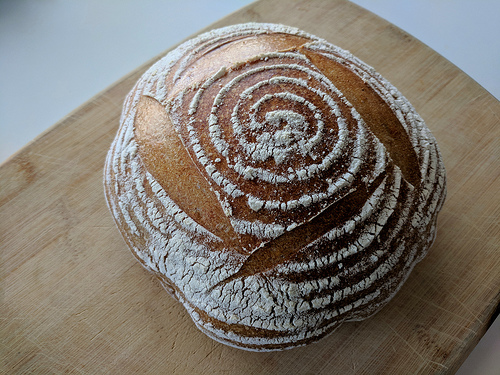Gluten is a substance that is found in many wheat products, such as cereals, bread, and grains. Gluten is what gives the dough its elastic texture. However, for those suffering from celiac disease, consuming these types of foods can lead to a number of negative health effects. Gluten is so prevalent in many of the foods that we eat, that many pre-packaged brands and bakeries around the United States have opted for gluten-free options so that those with celiac disease can enjoy the same flavors without the added grain products.
However, if you are allergic to gluten or are choosing to obtain a gluten-free diet, there’s good news. Sourdough may be your saving grace, due to its unique composition. Sourdough bread has been around for hundreds of years and unlike many other types of bread, which contains phytic acid, responsible for the storage of phosphorous a compound that is difficult for the body to digest, sourdough contains wild yeast and lactic acid. These ingredients help neutralize phytic acid, making it digestible for humans. You don’t have to live a gluten-free diet to benefit from sourdough bread! If you are frustrated by the lack of options out there when it comes to digestible bread that actually benefits your health, then here are some things to consider.
Sourdough And Its Effect On Those With Celiac Disease

Sourdough is a type of dough that is produced from a blend of ground grains and water that is left to sit out to form a wild yeast. When fermented, wild yeast often expels a sour or alcohol flavor. One of the main forms of bacteria responsible for the formation of sourdough is Lactobacillus. Lactobacillus creates lactic acid while fermenting and that also helps the bread rise. Sourdough has quite a long history and may have dated back to around 1500 B.C.E. to the Egyptians, who used this ancient bread to feed thousands of people per day.
The Lactobacillus produced in sourdough feeds off the enzymes that it takes to produce the bread. In other words, the bacteria requires the correct water-flour ratio in order to thrive. The same enzymes that are found in sourdough are also found in our gut, so those who are suffering from intestinal symptoms will often opt for the FODMAP (fermentable oligosaccharides, disaccharides, monosaccharides, and polyols) diet. The FODMAP diet eliminates certain enzymes found in grains, fruits, and vegetables that cause gas and sometimes painful bloating within the intestines for those who often have IBS associated with gluten.
Health Benefits And What To Watch Out For

One of the main dietary triggers for celiac disease is phytic acid, which is found in standard yeast and inhibits the body’s ability to absorb nutrients that cause painful gas and bloating. Unlike conventional bread, sourdough helps to break down the formation of phytic acid and helps the good bacteria to fight off harmful bacteria within your gut to help cultivate an equilibrium. Sourdough is also very beneficial for diabetes because it regulates the carbohydrate response by taking longer to digest.
Because sourdough is a very powerful remedy for those with troublesome gastrointestinal flora, it’s important to read labels very carefully when purchasing from a manufacturer. Sourdough isn’t regulated so there is no mandated way to guarantee it’s the genuine article other than checking the ingredients. You can always contact the manufacturer for more information. Baker’s yeast can be problematic for those with gut sensitivities because it converts to sugars and carbon dioxide which can lead to upset stomach and other issues, so it’s also imperative that you also avoid this ingredient whenever possible.
Basic Sourdough Bread Starter Recipe

Ingredients:
- 1 (.25 oz.) package of active dry yeast
- 2 cups warm water
- 2 cups all-purpose flour
Instructions:
1. In a medium-sized bowl, mix warm water and yeast. Mix with a wooden spoon until yeast is fully dissolved.
2. Add flour to the mixture until fully combined.
3. Pour the starter into a large plastic container. Try to find one that is large enough (at least a gallon) to hold the yeast mixture once it fully expands.
4. Cover the container with a cloth or a paper napkin, then secure it with a rubber band.
5. Place the starter in a warm spot, stirring at least once a day for five days.
6. Once the mixture has fully risen, refrigerate and use as needed. Then, replenish the remaining mixture, with one cup of water and one cup of flour daily to keep it fed. Allow the replenished mixture to sit for at least one hour before returning to the refrigerator.
Sourdough bread is a tasty treat that can be enjoyed with a variety of fare. However, if you are gluten-intolerant, it is important to know the benefits of sourdough so that you can have your bread and eat it too.
